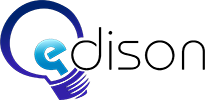Donald Knut: "3:16" - a book about the Bible (72,73,74 / 97)
“I would read a theologian’s book on programming.”
- Donald Knut
On Youtube there is a series of 97 short videos, where Donald Knut tells about his life. A couple of years ago I began to publish the most interesting moments, but now I decided to continue to acquaint readers with the way of thinking and the way of making decisions of "the greatest programmer of all times and peoples".
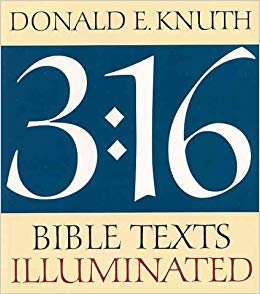
3:16 is a book that is different from any other book that has ever been written. I suppose I'm finally ripe to write such a book. In any case, 3:16 is a different way of studying the Bible, which has no analogues. I will try to explain.
')
It is natural for computer scientists to study complex things, breaking them into many simple things and then investigating a randomly selected part. Thus, collecting several parts, they have an idea in general. This is similar to the Gallup poll.
72
By interviewing thousands of people, you know what millions of people think. I use sampling in the study of documents. If someone gives me a coursework, and I don’t have time to read all 50 pages of a term paper, I will choose a random page and draw the appropriate conclusions. The student does not know in advance which page I'm going to check. Thus, sampling is what a computer scientist does.
Once, in the 70s, I wondered, what if I am thus “exploring” the Bible?
(Note of the translator: please, send comments in your personal translation recommendations to the PM, the article was in draft for 2 years, so I decided to finish Knut, so help, grandfather says it is very difficult)
What will happen if I choose a random part of the Bible and, having come to the library, look for what people think about these parts. What if asking people not about their favorite passage, but about a random one?
I decided to do this and, for a start, “trained” with a group of people in our local church, and we decided that we would continue. We will study chapter 3 verse 16 of each book of the Bible.
So, we started with Genesis 3:16, and then Exodus 3:16, and we continued until we got to Revelation 3:16.
I told you that I was a child in Lutheran school. Having been exposed to the teachings, however, I never felt that I understood all this well.
So about 60 Bible verses I really know. I could say that I knew Genesis 3:16 in some detail. Because he could go to the library at Stanford University and could check all the comments on Genesis.
Just a few pages are enough to read to understand the most important in Genesis 3:16. Thus, the idea of sampling was a big win. But not for understanding the Bible, but for understanding the comments on the Bible.
You know well how opinions have changed over the centuries about these different verses. Many people have many different opinions on this topic. But you could get a pretty good idea about these thousands of books written about the Bible. Know the direction of the authors' thoughts if you just accidentally took several pieces and examined them.
In any case, it was an amazingly effective way to learn something about the Bible. When I wake up in the middle of the night, I say to myself: “It would be a good book where I could take those things that I learned in the library from chapter 3, verse 16 and explain them to other people.” I think other people will use this method of study too.
73
I wrote to Hermann Zapf, who at the time was a good friend to me. In the letter I wrote: “Herman, I have an idea for a crazy book called 3:16. Can you make a cover for me?
I want the most beautiful "troika", which ever convened in the world, the most beautiful colon, the most beautiful "one", the most beautiful "six". So that you can speak with pride: 3:16 . "
Hermann answered with enthusiasm. He was one of the greatest calligraphers of all time, he said: “You know, Don, I know hundreds of calligraphers around the world, I could ask these people to contribute to the pages of the book. And each of them could draw up these verses. ” As it turned out, graphic designers are very nice people, and he was going to introduce me to them.
While I was in Boston, I was engaged in cleaning the house and other life, and also went to the Boston Public Library, the Harvard Bible Museum, the Theological Library, studied and copied all the various translations of poems that I could find.
Herman made calligraphy to verse John 3:16.

“For God so loved the world, that he gave his only begotten Son, that whosoever believeth in him, should not perish, but have everlasting life.”People in the Super Bowl always hold banners with the words John 3:16.
- John 3:16
And this is a kind of review of a part of the Gospel and I chose Hermann to be a calligrapher for this verse, and he provided me with a sample of the 3:16 page page.
While I was in Boston, I received a sample of the page printed on a good printer, and then Hermann and I prepared a letter to 60 calligraphers from all over the world.
I invited the best in my business in different countries to contribute, my pages, forming other poems.
It was a project that I managed to do while I was in Boston. I spent a lot of time then in the public libraries of Boston and other libraries, read the comments of other people on these verses.
When my sabbatical had come to an end, Jill and I reached the middle of the Old Testament.
I worked on a Song of Songs, and then we drove across the country to return to California.
I visited Yale University for a few days to visit the seminary library and work through the book of Isaiah and Jeremiah.
I drove to Pennsylvania, Pittsburgh, at a theological seminary. In various places across the country I worked on this idea. And then I went back to Stanford.
It took a few more years to master the New Testament. We received a large library of materials here at the Stanford Library, as well as at the theological union of Berkeley libraries.
So a few more years passed before we got the output project 3:16.
74
I received drawings from world calligraphers.
At this time we arrived in Boston, and letters from people who contributed to the book came every day. It was like Christmas!

The work was hard. I tried to make the text as good as the artistic texts I received.
I spent the weekend at work for several years. And then it occurred to me to translate the work into digital format. Because the world is increasingly becoming digital.

A company called Adobe Systems had already been founded. And I called John Warnack, one of the founders of Adobe.
Quite by chance, I still got through to him.
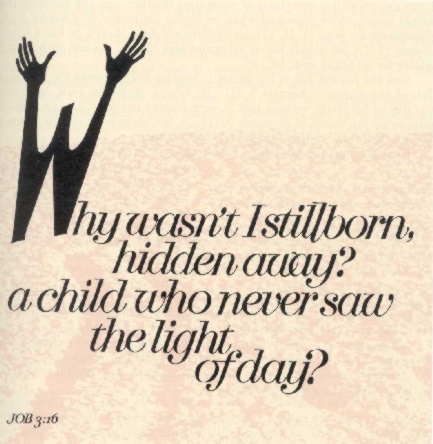
I said: “John, I have a great work of art and I want to digitize it. And we want to make a poster of different sizes. Is there any suitable software? ”
And he said: “Don, I have something for you. We are currently working on Photoshop. ” “Come to us and you can use our equipment. Bring your work here. ”
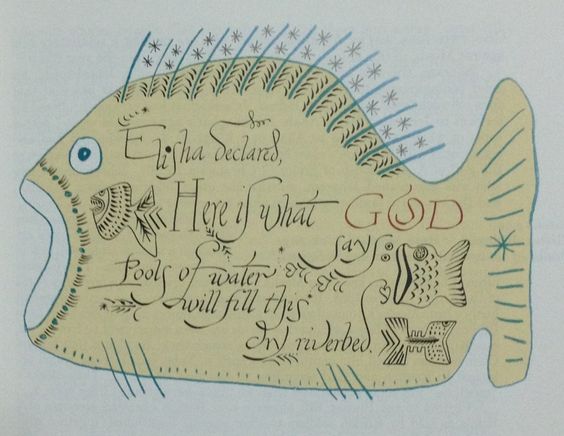
So, during the summer of 1989, I was the “night watchman” at Adobe Systems.
I worked in the art department and I had the opportunity to use about 50 Macintoshes every night when most people slept.
I could run Photoshop, which at that time was in beta testing. I had to work with a man named Tom. I call him "Tom from Michigan" he was the main implementer.
Thus, we identified some Photoshop errors at that time. But in any case, I could use the artwork 3:16 in Adobe and after a couple of months, I had everything in the format that I liked.
Macs were very slow at that time, and working with a file of two or three megabytes required heroic efforts. Starting an operation in Photoshop on one machine, it will be ready for the next operation in five minutes.
So I went to another Macintosh machine. It was like a chess tournament, where one person simultaneously plays on several boards. You take a step on one board, and then, you go to the next batch.
I was getting the print version slowly. Files transferred to the printer for a long time. At that time they had a bitmap processor, they called it a bitmap RIP processor.
After receiving the printed material, I went to Singapore, and I waited for one or two readers to appear who would like the publication. And my wish came true within a week from the moment of publication. It was awesome.
I expected a lot of negative reactions to the book. Indeed, why does a programmer do what he has no right to do - write about the Bible.
You know, I would read a theologian's book on programming. And the only thing I could do, but the theologian is not - I can give an independent assessment, while they cannot do it, because they obviously have selfish goals.
I can guide people impartially, saying that it’s really great. We must pay tribute to the theologians for having done their work in many ways well.
But in any case, I found this "weekend project" a kind of cognitive-enriching. And I am very glad that it turned out the way it happened.
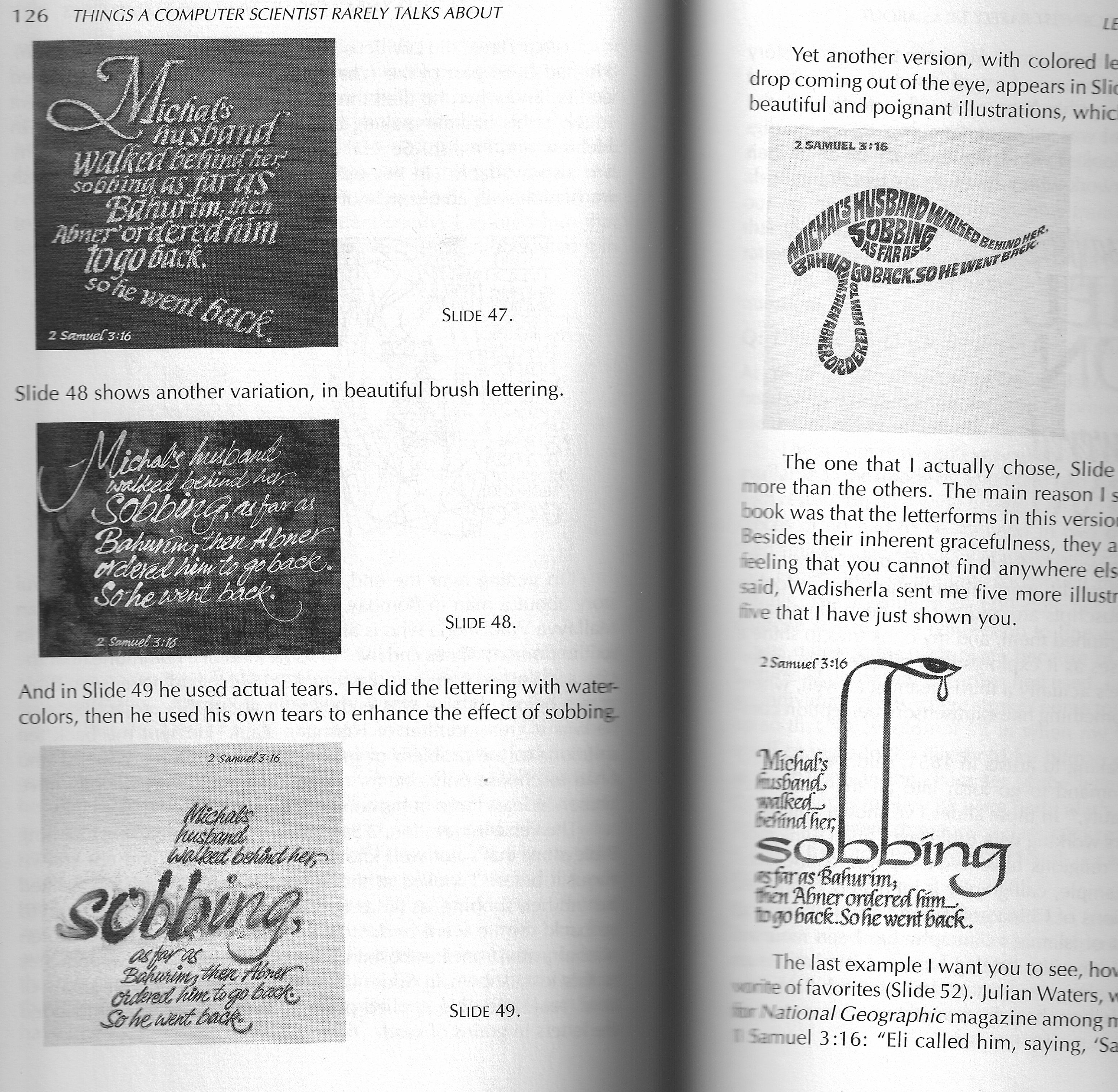
List of 97 videos with stories of Donald Knut
Youtube playlist
1. Family history
2. Learning to read and school
3. My mother
4. My parents' finances
5. Interests in high school
6. Being a nerd of nerds at high school
7. My sense of humor
8. The Potrzebie System of Weights and Measures
9. Feeling the need to prove myself
10. Why I chose Technological Institute Case
11. University life: my basketball management system
12. University life: the fraternity system
13. Meeting my wife Jill
14. Bible study
15. Extra-curricular activities at Case
16. Taking graduate classes at Case
17. Physics, welding, astronomy and mathematics
18. My maths teacher at Case and a difficult problem
19. My computer experience
20. How I got interested in programming
21. Learning how to program on the IBM 650
22. Writing a tic-tac-toe program
23. Learning about Symbolic Optimum Assembly programs
24. The Internal Translator
25. Adding more features to RUNCIBLE
26. Want to go to Caltech
27. Writing a compiler for the Burroughs Corporation
28. Working for the Burroughs Corporation
29. Burroughs Corporation
30. My interest in context-free languages
31. Getting my PhD and the problem of symmetric block designs with ...
32. Finding a solution to the problem of projective planes
33. Inception of The Art of Computer Programming
34. 1967: a turbulent year
35. Work on attribute grammars and the Knuth-Bendix Algorithm
36. Being creative in the forest
37. A new field: analysis of algorithms
38. The Art of Computer Programming: underestimating the size of the ...
39. The Art of Computer Programming
40. Inspiration to write Surreal Numbers
41. Writing Surreal Numbers in a hotel room in Oslo
42. Finishing the Surreal Numbers
43. The emergence of computer science
44. I want to do computer science instead of arguing for it
45. A year doing National Service in Princeton
46. Moving to Stanford and wondering whether to make the right choice
47. Designing the house in Stanford
48. Volume Three Of The Art Of Computer Programming
49. Working on the Volume.
50. Poor quality typesetting on the second edition of my book
51. Deciding to make my own typesetting program
52. Working on my typesetting program
53. Mathematical formula for letter shapes
54. Research into the history of typography
55. Working on my letters and problems with the S
56. Figuring out how to typesetting
57. Working on TeX
58. Why should the designer
59. Converting Volume Two to TeX
60. Writing a users manual for TeX
61. Giving the Gibbs lecture on my typography work
62. Developing Metafont and TeX
63. Why I chose and transcribed it to ...
64. Tuning up my fonts and getting funding for TeX
65. Problems with Volume Two
66. Literate programming
67. Re-writing TeX using the feedback I received
68. The importance of stability for TeX.
69. LaTeX and ConTeXt
70. A summary of the TeX project
71. A year in Boston
72. Writing a book about the Bible
73. The most beautiful 3:16 in the world
74. Chess master playing at Adobe Systems
75. At MIT
76. Back to work at Stanford
77. Taking up swimming help to help me cope with stress
78. My graduate students and my 64th birthday
79. My class on Concrete Mathematics
80. Writing a book on my Concrete Mathematics class
81. Updating Volumes of Computer Programming
82. The Art of Computer ...
83. Two final major research projects
84. lucky life
85. Coping with cancer
86. Honorary doctorates
87. The Importance of the Kyoto Prize
88. Pipe organisms of life
89. The pipe organ in my living room
90. Playing the organs
91. An international symposium on the Soviet Union
92. The Knuth-Morris-Pratt algorithm
93. My advice to young people
94. My children: John
95. My children: Jenny
96. Working on a series of books
97. Why I chose analysis
1. Family history
2. Learning to read and school
3. My mother
4. My parents' finances
5. Interests in high school
6. Being a nerd of nerds at high school
7. My sense of humor
8. The Potrzebie System of Weights and Measures
9. Feeling the need to prove myself
10. Why I chose Technological Institute Case
11. University life: my basketball management system
12. University life: the fraternity system
13. Meeting my wife Jill
14. Bible study
15. Extra-curricular activities at Case
16. Taking graduate classes at Case
17. Physics, welding, astronomy and mathematics
18. My maths teacher at Case and a difficult problem
19. My computer experience
20. How I got interested in programming
21. Learning how to program on the IBM 650
22. Writing a tic-tac-toe program
23. Learning about Symbolic Optimum Assembly programs
24. The Internal Translator
25. Adding more features to RUNCIBLE
26. Want to go to Caltech
27. Writing a compiler for the Burroughs Corporation
28. Working for the Burroughs Corporation
29. Burroughs Corporation
30. My interest in context-free languages
31. Getting my PhD and the problem of symmetric block designs with ...
32. Finding a solution to the problem of projective planes
33. Inception of The Art of Computer Programming
34. 1967: a turbulent year
35. Work on attribute grammars and the Knuth-Bendix Algorithm
36. Being creative in the forest
37. A new field: analysis of algorithms
38. The Art of Computer Programming: underestimating the size of the ...
39. The Art of Computer Programming
40. Inspiration to write Surreal Numbers
41. Writing Surreal Numbers in a hotel room in Oslo
42. Finishing the Surreal Numbers
43. The emergence of computer science
44. I want to do computer science instead of arguing for it
45. A year doing National Service in Princeton
46. Moving to Stanford and wondering whether to make the right choice
47. Designing the house in Stanford
48. Volume Three Of The Art Of Computer Programming
49. Working on the Volume.
50. Poor quality typesetting on the second edition of my book
51. Deciding to make my own typesetting program
52. Working on my typesetting program
53. Mathematical formula for letter shapes
54. Research into the history of typography
55. Working on my letters and problems with the S
56. Figuring out how to typesetting
57. Working on TeX
58. Why should the designer
59. Converting Volume Two to TeX
60. Writing a users manual for TeX
61. Giving the Gibbs lecture on my typography work
62. Developing Metafont and TeX
63. Why I chose and transcribed it to ...
64. Tuning up my fonts and getting funding for TeX
65. Problems with Volume Two
66. Literate programming
67. Re-writing TeX using the feedback I received
68. The importance of stability for TeX.
69. LaTeX and ConTeXt
70. A summary of the TeX project
71. A year in Boston
72. Writing a book about the Bible
73. The most beautiful 3:16 in the world
74. Chess master playing at Adobe Systems
75. At MIT
76. Back to work at Stanford
77. Taking up swimming help to help me cope with stress
78. My graduate students and my 64th birthday
79. My class on Concrete Mathematics
80. Writing a book on my Concrete Mathematics class
81. Updating Volumes of Computer Programming
82. The Art of Computer ...
83. Two final major research projects
84. lucky life
85. Coping with cancer
86. Honorary doctorates
87. The Importance of the Kyoto Prize
88. Pipe organisms of life
89. The pipe organ in my living room
90. Playing the organs
91. An international symposium on the Soviet Union
92. The Knuth-Morris-Pratt algorithm
93. My advice to young people
94. My children: John
95. My children: Jenny
96. Working on a series of books
97. Why I chose analysis
More about Knut on Habré
- Donald Knut: this is a turnaround
- Giant component: hooks for fishing, galaxy clusters, molecular biotechnology, nanomaterials
- How Donald Knut went to school and went to university
- Donald Knut about his happy life, his death and the last two projects
- Donald Knuth: about Richard Feynman, awards and algorithm of the ILC
- Donald Knut: about the assembler, the translator and competent programming
- Donald Knut on the first steps in programming: How I spent the summer with a computer, not with girls (19,20,21,22 / 97)
- Donald Knut: When will the fourth volume finally come out?
- Donald Knut: about his wife, kisses, "Concrete math" and a look at teaching at the university
- Donald Knut: how I started analyzing algorithms and went to the USSR for this (37.91.97 / 97)
- Donald Knut: How the “Art of Programming” was created (33,38,39 / 97)
- Donald Knut and Surreal Numbers: I worked for six days and rested on the seventh (40,41,42 / 97)
- Donald Knut: I sat in the back row and hunted jokes, and the teachers resigned and didn't often beat on the ass (1,2,3,7 / 97)
- Donald Knut: “My advice to the young” (93/97) and “Feeling the need to assert oneself” (9/97)
- Happy Birthday to Donald Knut
- Interview with Donald Knut
- Donald whip
- Literary programming
The post is written with the support of the company EDISON Software, which produces software for remote teams and is engaged in the development of electronic libraries .
Source: https://habr.com/ru/post/432478/
All Articles
